Central Processing Unit (CPU)
The CPU is the 'brain' of the computer. It is the device that carries out software instructions.

CPUs usually plug into a large socket on the main circuit board (the motherboard) of a computer. They get very hot when they are operating so usually have a large fan attached to their top to keep them cool.
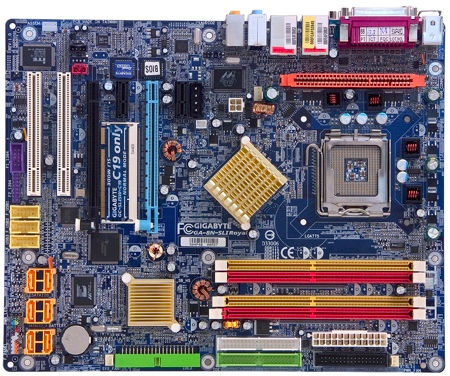

The speed of a CPU is measured in Hertz (Hz).
The speed generally corresponds to the number of actions the CPU can perform every second.
The speed generally corresponds to the number of actions the CPU can perform every second.
- 1 Megahertz (MHz) is 1,000,000 (1 million) Hertz
- 1 Gigahertz (GHz) is 1,000,000,000 (1 billion) Hertz
Main Memory
Any data or instructions that are to be processed by the CPU must be placed into main memory (sometimes known as primary storage).
Random Access Memory (RAM)
Random Access Memory (RAM) is the part of the computer that temporarily stores the instructions that the computer is running, and the data it is processing.
RAM is a volatile storage device. This means that if the computer’s power is turned off the contents of RAM disappear and are lost.
RAM, like the CPU, also plugs in to sockets on the motherboard.
When a computer is in use, its RAM will contain…
RAM is a volatile storage device. This means that if the computer’s power is turned off the contents of RAM disappear and are lost.
RAM, like the CPU, also plugs in to sockets on the motherboard.
When a computer is in use, its RAM will contain…
- The operating system software
- The application software currently being used
- Any data that is being processed
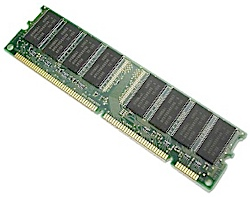
The storage capacity of memory is measured in Bytes.
Usually RAM can hold millions of bytes of data, so you will see capacities measured in:
Usually RAM can hold millions of bytes of data, so you will see capacities measured in:
- Megabytes (MB) or 1,000,000 (1 million) Bytes
- Gigabytes (GB) or 1,000,000,000 (1 billion) Bytes
Read-Only Memory (ROM)
Read-Only Memory (ROM) is used in most computers to hold a small, special piece of software: the 'boot up' program.
This software runs when the computer is switched on or 'boots up'. The software checks the computer’s hardware and then loads the operating system.
ROM is non-volatile storage. This means that the data it contains is never lost, even if the power is switched off.
This software runs when the computer is switched on or 'boots up'. The software checks the computer’s hardware and then loads the operating system.
ROM is non-volatile storage. This means that the data it contains is never lost, even if the power is switched off.
This 'boot up' software is known as the BIOS (Basic Input Output System)
Peripheral Devices
Technically, a computer need only be made up of a CPU and some RAM. But a computer like this would not be much use to anybody – other devices need to be connected to allow data to be passed in and out of the computer.
The general name for these extra devices is ‘peripheral devices’. They are usually categorised into input devices, output devices and storage devices.
Input and output devices are explored more fully in Section 2.
Storage devices are explored more fully in Section 3.
The general name for these extra devices is ‘peripheral devices’. They are usually categorised into input devices, output devices and storage devices.
Input and output devices are explored more fully in Section 2.
Storage devices are explored more fully in Section 3.
'Peripheral' literally means 'around the edge'.
In other words these devices are not part of the central core of the computer.
In other words these devices are not part of the central core of the computer.
What Are Input Devices?
Devices that pass data into the computer are known as input devices.

They all take information from the outside world (key presses, hand movements, images), convert them into data and then send this data into the computer for processing.
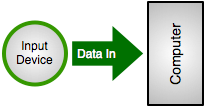
What Are Output Devices?
Devices that take data from the computer are known as output devices.
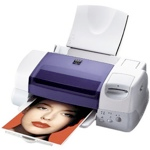
They all take information from the computer and convert it into real world things (images, paper hardcopy, sound).

What is Secondary / Backing Storage?
Secondary storage (sometimes called backing storage) is the name for all of the devices (apart from ROM and RAM) that can store data in a computer system.
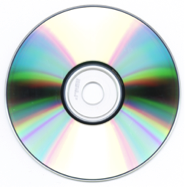
Secondary storage is non-volatile, so data that is stored on these devices remains there safely.
When we talk about 'saving' a file, what we mean is moving data from volatile RAM to non-volatile secondary storage.
e.g. If we are typing a letter using Word, the data for the letter is in RAM (if the power goes off we lose it all).
When we save the letter, the data is copied from RAM to a storage device such as a memory stick or hard-drive for safe-keeping.
e.g. If we are typing a letter using Word, the data for the letter is in RAM (if the power goes off we lose it all).
When we save the letter, the data is copied from RAM to a storage device such as a memory stick or hard-drive for safe-keeping.
